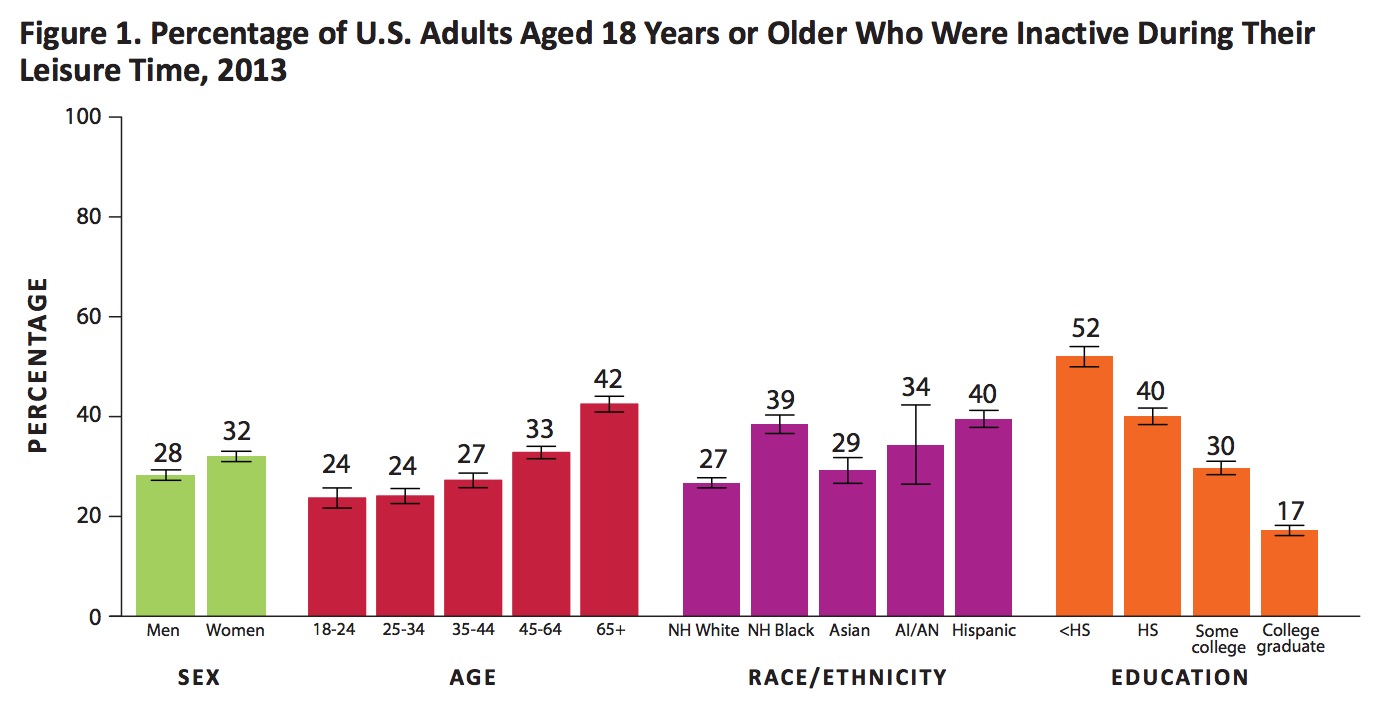UNITED STATES DEPARTMENT OF HEALTH AND HUMAN SERVICES
Promoting Walking and Walkable Communities: A Strategy to Improve Health
One out of every two U.S. adults is living with a chronic disease, such as heart disease, cancer, or diabetes. These diseases contribute to disability and premature death. In addition, the medical treatment of chronic diseases incurs substantial costs for individuals, families, and the nation.
The good news is that many chronic diseases can be delayed, prevented, or managed through healthy behaviors. Along with eating a healthy diet4 and avoiding tobacco use, people can decrease their risk of chronic disease by being physically active. Physical activity can help people with chronic diseases manage their conditions. In addition, physical activity reduces the risk of premature death and supports positive mental health and healthy aging—making it one of the most important actions people can take to improve their overall health. To obtain substantial health benefits, the 2008 Physical Activity Guidelines for Americans recommends that adults get at least 150 minutes of moderate-intensity aerobic physical activity or 75 minutes of vigorous-intensity physical activity, or an equivalent combination, each week and that children and adolescents be active for at least 60 minutes every day.
Despite the many benefits of physical activity, only one-half of all U.S. adults and about one-quarter of high school students meet the guideline for aerobic physical activity in the 2008 Physical Activity Guidelines for Americans. Walking is an excellent way for most people to increase their physical activity. It is a powerful public health strategy for the following reasons:
- Walking is an easy way to start and maintain a physically active lifestyle.
- Walking is the most common form of physical activity for people across the country.
- Walking can serve many purposes. It can be a way to exercise, have fun, or get to school, work, or other nearby destinations.
- Making walking easier can help communities by improving safety, social cohesion, and local economies and reducing air pollution.
To promote walking, community strategies can be implemented where people live, learn, work, and play. Places for walking can be designed and enhanced to improve their walkability. Improving walkability means that communities are created or enhanced to make it safe and easy to walk and that pedestrian activity is encouraged for all people. Improving the walkability of communities can benefit people of all abilities, including those who run, bike, skate, or use wheelchairs. This publication, Step It Up! The Surgeon General’s Call to Action to Promote Walking and Walkable Communities, is intended to increase walking across the United States by calling for improved access to safe and convenient places to walk and wheelchair roll, as well as for a culture that supports these activities for people of all ages and abilities.
This Call to Action presents five goals and supporting implementation strategies that are grounded in scientific and practice-based evidence. These goals call for action by multiple sectors of society, including transportation, land use, and community design; parks, recreation, and fitness; education (schools, colleges, and universities); business and industry; volunteer and nonprofit; health care; media; and public health. Families and individuals will also need to be involved to achieve these goals.
Download full version (PDF): Step It Up!
About the United States Department of Health and Human Services
www.hhs.gov
It is the mission of the U.S. Department of Health & Human Services (HHS) to enhance and protect the health and well-being of all Americans. We fulfill that mission by providing for effective health and human services and fostering advances in medicine, public health, and social services.
Tags: Health, Public Health, Surgeon General, United States Department of Health and Human Services, Vivek Murthy







 RSS Feed
RSS Feed